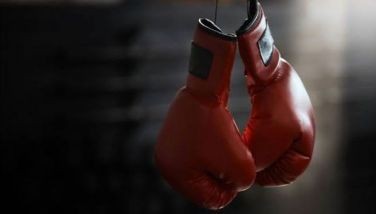Another threat from China
There is a terrifying specter facing our domestic steel industry. It is the specter of a large Chinese production capacity that will likely invite dumping of products on neighboring countries.
Consider the numbers. China, the largest steel producer on the planet, has an annual steel production capacity of 900 million metric tons. By comparison, the second largest producer, the US, has a production capacity of only 60 million metric tons. The Philippines has an annual steel-making production capacity of 1.4 million tons, even as our domestic consumption has risen to five million metric tons.
Because of the slowdown experienced by China’s economy, she now has an excess capacity of about 300 million tons. To address that, Beijing has closed down some old plants and subsidizes exports of finished products.
This has opened a new window for technical smuggling to happen.
Over the past few weeks, large shipments of Chinese steel billets have flooded the local market. Steel billets are intermediate products in the production process. They should not qualify for subsidies and rebates from the Chinese government.
What some unscrupulous exporters do is to misclassify billets to avail of the subsidies. One form is to add boron, an otherwise unnecessary element, to the billets to qualify them as finished products. The other method is to misdeclare the billets as finished square bars.
Local importers of these billets enjoy the advantage of effectively lower prices once the subsidies are taken into consideration. That gives them unfair advantage over legitimate local producers. Such trading practices cause the Philippines to be a net exporter of scrap metal even if this can be converted into billets using local manufacturing capacity.
If the unfair trade practice continues, this will eradicate our domestic steel production. Our trade official ought to take the matter up with their Chinese counterparts. At the same time, our Customs officials must be more vigilant in checking misdeclaration of these imports.
A steel products importer based in Mandaue City has been making the Bureau of Customs (BoC) look like a school for fools.
Reports reveal that for several years now, a certain Joyland Industries Corp. has been busy shipping in finished steel products such as steel wire rods. The declared value of these steel products are way below unprocessed steel billets – and, in fact, way below prevailing market prices for scrap metal.
Because taxes and duties are paid on the basis of the declared value of the imports, it is estimated that government has lost hundreds of millions in potential revenue from just this case alone. Little wonder that the BoC consistently fails to meet its revenue targets.
Last month, BoC revenues was P5.9 billion short of target. From January to August this year, the BoC chalked up a cumulative deficit from revenue targets of P36.04 billion. Looking closely at the case of Joyland, we can see why.
On May 9, 2012, for instance, Joyland brought in a shipment of 7,904.17 metric tons of finished steel wire rods. The declared value of the imports was $279 per metric ton. The prevailing value for steel rods during the period April-May this year ranged from $640 to $700.
Not only is Joyland’s finished steel product declared at half the prevailing global market price. It is also substantially below the global price for scrap metal which ranges from $375 to $400 per metric ton.
The month before, a shipment of exactly the same product Joyland brought into Cebu entered the Port of Manila with a declared value of $575. Because the declared value was below the international guideline prices, the shipment was placed under investigation by the CIIS.
How is it possible for Joyland to declare the price of its imports at less than half of prevailing market prices and convince the customs collector of Cebu that the declaration is true? Perhaps customs collector for Cebu Ronnie Silvestre might have an explanation.
After several complaint letters sent by the Philippine Iron and Steel Institute (PISI) to the BoC, the DOF and the DTI, the standard reply has been that we follow the Transaction Value Method. Once an importer presents documents duly notarized stating the price at which the commodities were purchased, the BOC accepts the declared value.
That seems to be a convenient way for our Customs authorities from performing due diligence. It certainly allows companies like Joyland to engage in obvious technical smuggling through under-valuation of imports and misdeclaration of products. Operations like this one result in hundreds of millions of lost revenues --- possibly enough for the BOC to meet its revenue targets.
If our customs bureaucrats exercised a little more diligence, all they have to do is refer to the Metal Bulletin Weekly. This information source reports the weekly average pricing globally for all metal products. A large discrepancy between declared value and global price guidelines should immediately precipitate an investigation.
Rather than hanging around warehouses, the customs intelligence service headed by Danny Lim should be tracking information using the most common digital instruments. These days, they may even track up-to-the-minute product pricing using their smartphones. What customs intelligence needs are computer geeks and not James Bond wannabes.
In the present communications environment, there is simply no excuse for technical smuggling to occur --- and at a scale that threatens the very existence of our domestic steel industry.
To the rescue
Child Haus, a temporary shelter for underprivileged parents and their children who are undergoing medical treatment in Manila, is moving to a permanent home on Sept. 21 in Pinyahan, Quezon City, after being “evicted” by the Philippine Charity Sweepstakes Office (PCSO).
The new home of Child Haus was donated by Hans Sy, president of SM Prime Holdings. It is a seven-room, ’70s-style bungalow that can accommodate 100 child patients and their guardians. Sy bought and refurbished the property with his own money.
It was celebrity hairdresser and philantrophist Ricky Reyes who first sought the help of PCSO in finding a place for Child Haus, the acronym for Center for Health Improvement and Life Development.
After seven years of rent-free operation, the Child Haus received a notice of ejection from the PCSO. The agency was moving to Manila, and the Child Haus building was deemed condemned.
Unfortunately, PCSO didn’t offer a new place and stopped giving its monthly grant.
One newspaper wrote an account of how Child Haus found its new home. “Hans showed him the house, already white-washed and re-tiled. The base shell maintained the original architectural details such as the adobe wall and ornate wrought iron grillwork. The large windows facilitated natural light and ventilation, which was perfect for the patients. Hans said the property was for Child Haus. When Reyes asked him what his obligation was, Hans handed him the keys. ‘You take over,’ he said.”
It is good that Child Haus found a patron in the person of Hans Sy. But the big question remains: How many more of the same group has PCSO abandoned?
For comments, e-mail at [email protected]
- Latest
- Trending




























